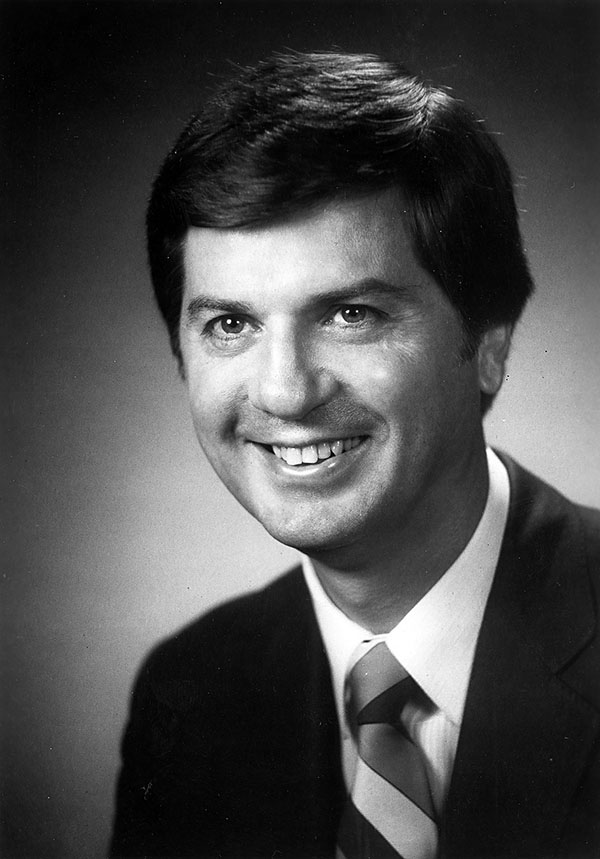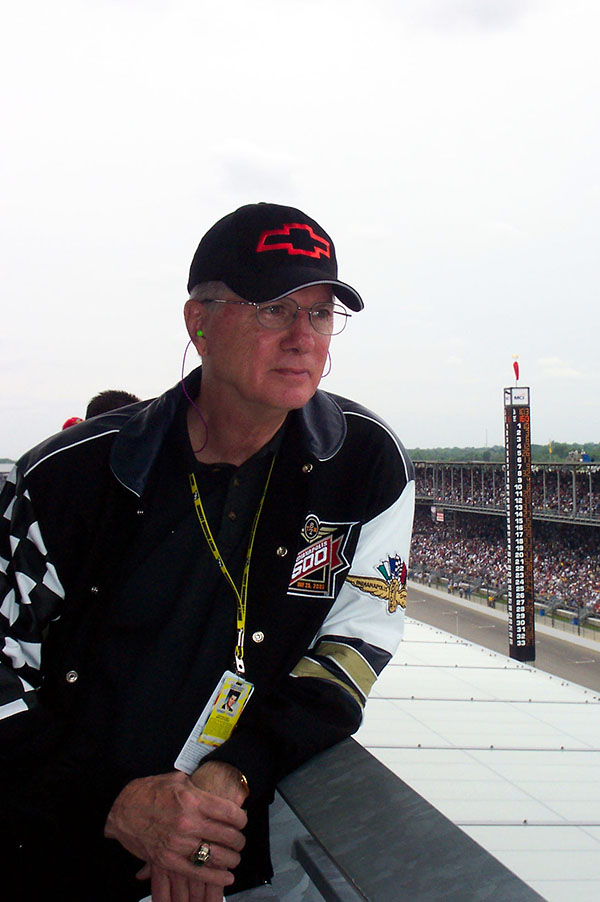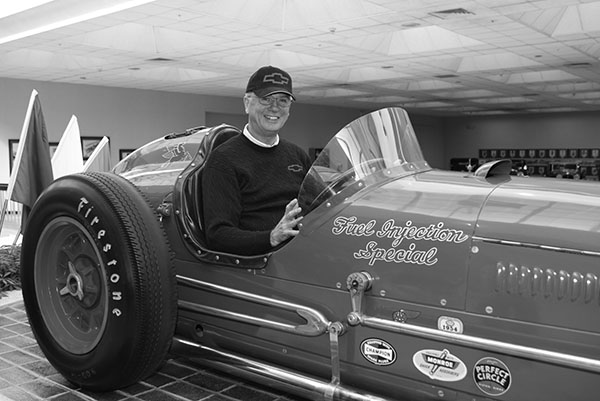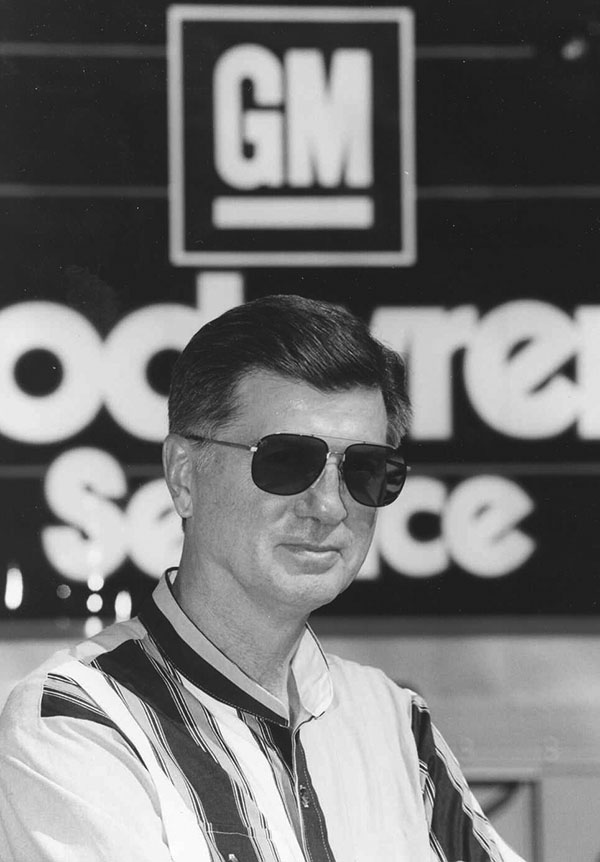2005 SEMA Hall Of Fame Inductee
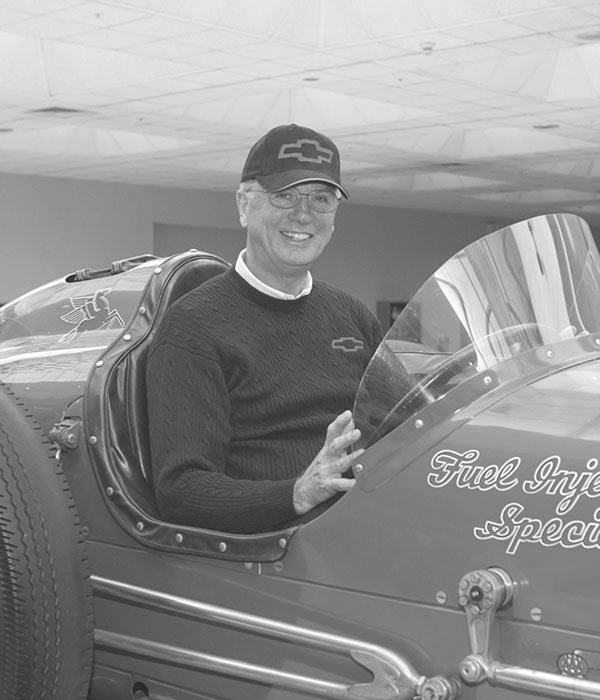
Herb Fishel
The Business of Motorsports
Herb Fishel's mother tells the story of how-decades before winning the triple crown of racing, driving the pace car at the Indy 500 or being named one of Hot Rod magazine's 100 most influential people-he used to take the nipple off his bottle so he could wash his toy cars with milk.
While in diapers, he was training for his relationship with SEMA. As an adult, he pioneered the concept of a featured manufacturer, creating Chevrolet's "takeover" of the rotunda at the 1984 SEMA Show.
"This was the first time a vehicle manufacturer played a major role in the SEMA Show and led to the expansive growth of the Show," says Chuck Blum, president emeritus of SEMA. "Up to that point in time, OEM participation in the Show was very limited and inconsistent."
During his 40-year career at General Motors, Fishel said that he always believed in the connection between the high-performance industry and the auto manufacturer. It was a career that took him around the world and a long way from his native North Carolina.
Herb Fishel said that he had already made his mind up to pursue a career in auto racing well before he got to high school. "Cars totally consumed my thinking at that stage, [but I] wasn't thinking much beyond being a master mechanic," Fishel recalled.
Fishel's Uncle Bill, a mechanic at the local Lincoln-Mercury dealership, possessed a rather well-equipped home garage where Fishel spent his free time. "I would spend all my spare time with him after hours and on the weekends sorting parts and working on things like a Crosley Hot Shot and a midget-type race car powered by a Mall 11-horsepower engine," he said. "We also repaired lawn mowers."
That same Uncle Bill took Fishel and several other neighborhood kids to Winston-Salem's Bowman Gray Stadium each week during the summer. NASCAR ran modified and sportsman race cars there and, as Fishel noted, his group arrived early and stayed late. Billy and Bobby Myers became heroes to Fishel, who hung out at their shop and often followed them to the junkyards as they pursued parts for their '37 Fords.
Fishel may not have been looking past a future as a master mechanic in high school, but his parents were. Had they not intervened, he said, he would have skipped college and gone to work as a mechanic. But they insisted, so he enrolled at North Carolina State College to pursue a mechanical engineering degree.
While in college, Fishel kept close tabs on the racing scene and took particular notice of the Mystery Engine Caper at Daytona in February of 1963. [The 427-cubic inch "mystery" engine showed up at the 1963 Daytona 500 and is considered to be the foundation of GM big-block technology.
As he neared graduation, Fishel still had racing on his mind. "I wrote letters to Lee Petty, Junior Johnson and Bondy Long seeking employment," he said. "I never heard from Lee or Junior, but I did receive a response from Ned Jarrett indicating that they really appreciated my interest but really didn't have any need for someone with my credentials."
Undaunted, Fishel continued with his automotive interests-especially a fascination with the engines and cars that Zora Arkus-Duntov was designing and building. An on-campus interview with a General Motors representative led to a follow-up interview with Chevrolet Engineering in Warren, Michigan. Fishel said that his flight from Raleigh, North Carolina, to Detroit in April 1963 was his first-ever plane ride.
During that initial interview, Fishel was asked if there was anything special he'd like to do while visiting and he said that he'd like to meet Duntov. As luck would have it, Duntov was free for a brief meeting, and Fishel's fate was sealed. "With that introduction, they could have had me for nothing," he said.
Fishel spent his first six years with GM doing design and development work on all the engines he'd read about. In 1968, he was promoted to design engineer in the production High Performance Engine Group where he worked on the development of the 302 V8 for the Camaro, among other things.
Fishel's motorsports career began at General Motors in 1969 when he went to work for Vince Piggins in the Chevrolet Product Performance Group. "For the next seven years I was able to work one to one with many of my racing heroes: Junior Johnson, Bill Jenkins, Jim Travers and Frank Coon," he said. "I spent a lot of time working with Smokey Yunick at his Best Damn Garage in Daytona Beach." In 1976, Lloyd Ruess convinced Fishel to make the move to Buick to create the Buick Special Products Group. He returned to Chevrolet in 1983 to replace Piggins, who was retiring. "In addition to running the racing group at Chevrolet, I was able to spend more time with the high-performance and custom parts industry by participating in the major trade shows like SEMA and the Circle Track Trade Show," Fishel said.
Unfortunately, we have nowhere near enough space to highlight all of what Fishel accomplished during his 40-year career at General Motors. He led GM to the triple crown of racing by winning the Daytona 500, the Indianapolis 500 and the 24 Hours of Le Mans all in the same year. Hot Rod magazine named him one of the 100 most important people in the first 50 years of hot rodding in 1997, and he was inducted into the Hot Rod Hall of Fame that same year.
When asked about the highlight of motorsports career, Fishel said it was driving a 1953 Ferrari 250 MM in the 2001 Italian Mille Miglia with the love of his life, Sandy Heng. Fishel retired from General Motors in September, 2003. One of his final duties was to drive the Chevrolet SSR official pace car vehicle to start the 87th Indianapolis 500.

